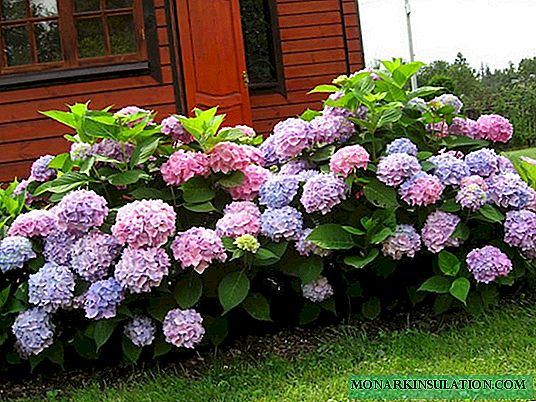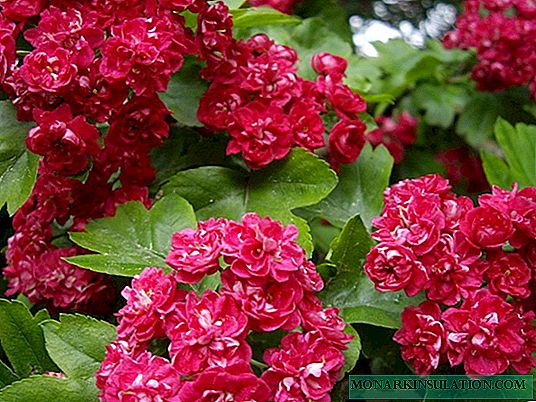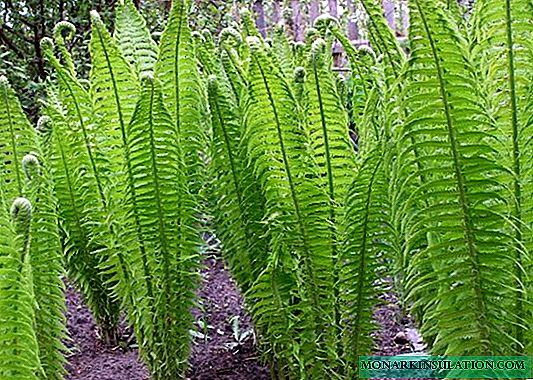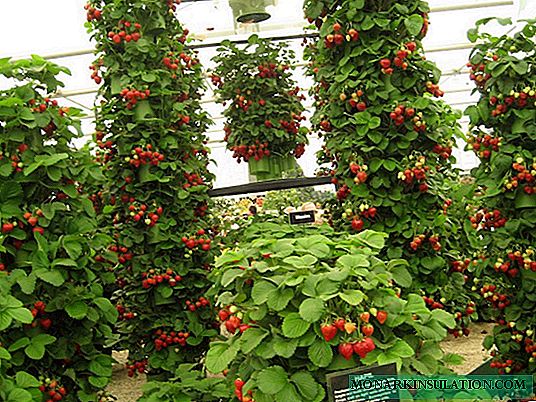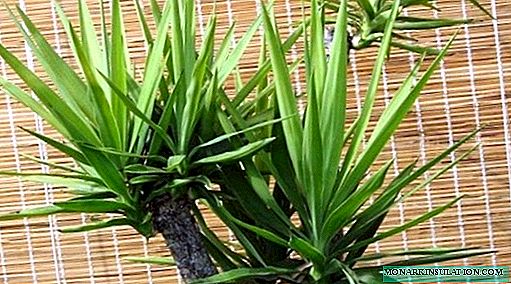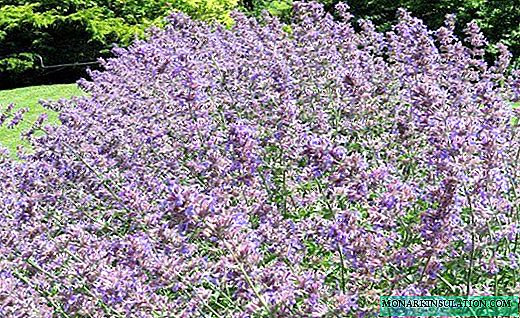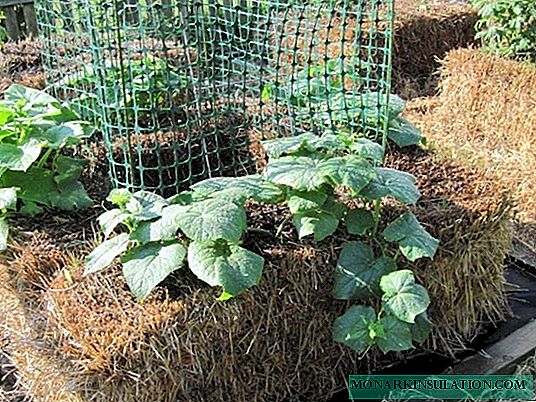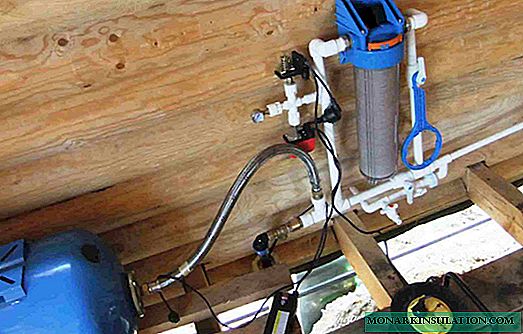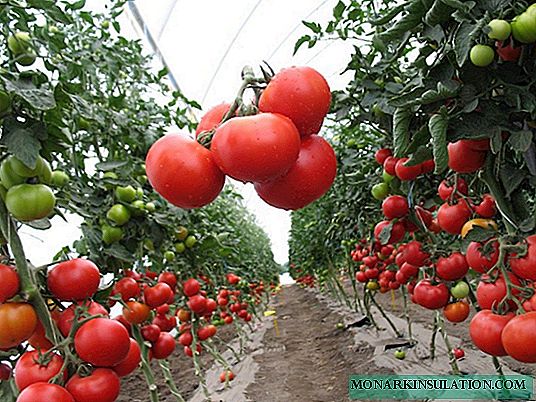
In the abundance of varieties and hybrids of tomatoes these days it is easy to get confused. But the gardener usually knows exactly what he wants. True, he wants to eat some delicious fresh tomatoes, as early as possible, and spin a dozen or two jars for the winter. Can one variety fit for all needs? Maybe universal tomatoes exist. And one of them is a Verliok F1 hybrid.
Description of Verlioca variety, its characteristics, region of cultivation
Tomato Verlioka was included in the State Register of the Russian Federation in 1990, intended for greenhouse cultivation throughout our country. True, the description of the hybrid in the document is for some reason missing. But there is another record dated 2006, and it refers to a hybrid called Verlioka plus. Some oddities begin here. This hybrid is recommended for cultivation in the northernmost and southernmost regions. It is difficult to give an explanation: after all, if we are talking about a greenhouse, then why not plant a tomato for the Leningrad Region in the Moscow Region, and why even plant a tomato in a greenhouse in the North Caucasus region? Although ... Probably, to enjoy the fruits in the spring, because the hybrid belongs to the early ripening.
From numerous articles it can be understood that both versions of Verlioka are quite similar to each other and have excellent characteristics, except that the updated hybrid has slightly larger fruits. Verlioca is classified as semi-determinant tomato: the height of the bushes depends on agricultural technology, it is usually maintained in the range of 1.5-2 m. Leaves are below average, leafy shrubs are medium.
Fruits ripen early: the first harvest is ready to harvest about 3.5 months after sowing seeds, tomatoes are collected in brushes of 5-10 pieces. At the same time, a positive quality of the hybrid is that almost all fruits have the same size: they are not large, weighing from 70 to 100 g, rounded. The bright red color characteristic of ripe tomatoes, they acquire evenly, the crop ripens in unison.

Fruits of Verliok tomato - as copies of each other: even size, regular shape
Fruits have a dense skin, practically do not crack during ripening. The taste is sweetish, rich, according to the assessments of tasters and many lovers - good or even excellent. Productivity is very good: with proper care from one bush, you can collect up to 7 kg of tomatoes, which means that at least 20 kg per square meter. If necessary, tomatoes can be harvested unripe, they perfectly "reach" during storage, including during transportation, which is easy to carry. This fact makes the hybrid commercially attractive.
The purpose of the fruits is universal: they are tasty in various salads, and in the variant "eaten right by the garden", and in numerous varieties of preparations. Tomatoes are wonderful located in any glass jars, when filled with preservative solutions they do not crack. If an excess crop is obtained, it can be used to make juice, tomato paste, and various sauces.
Unfortunately, the hybrid does not feel well in open ground, it can be planted outside of greenhouses only in the warmest regions. However, it easily tolerates forced drought and even bears fruit well in partial shade. The formation of the bush and its garter to strong supports are mandatory, but in general this tomato is classified as unpretentious.
Appearance
Separately taken Verlioki fruits look like toys: they have the correct shape, even color, and if you put several copies next to each other, it seems that they are copied from each other.

In shape and color, Verlioc is a completely traditional tomato
Tomatoes on the bushes ripen in clusters, and this leads to the fact that during the period of mass fruiting of leaves on plants, it is almost not visible, since there are a lot of fruits.

There are so many tomatoes on the bush that it is unclear why he holds them and how he feeds them.
Advantages and disadvantages, features, differences from other varieties
Tomato Verlioca is very popular among ordinary summer residents and farmers who grow tomatoes for sale. This is due to its advantages, the list of which is quite a lot:
- early ripening;
- very high, especially for early ripe tomatoes, productivity;
- universality of the use of fruits;
- uniform ripening of the crop;
- excellent presentation;
- the possibility of collecting fruits unripe with subsequent ripening during transportation;
- high pain tolerance;
- tolerance to lack of lighting and fluctuations in temperature and humidity.
The disadvantages include, for example, the fact that, with an excellent appearance, the fruits are loose, are not stored for long. In addition, with all the unpretentiousness of the growing conditions, the hybrid requires mandatory skilled bush formation, without which the yield decreases sharply.
Probably, the uniformity of the fruits should be considered the main feature of the hybrid: they have almost the same size within the bush and ripen almost simultaneously. Some gardeners consider this a drawback, wanting to extend fruiting. However, there are many other varieties that bear fruit from the beginning of July and right up to frost, but we also need those whose crops can be harvested almost simultaneously. Such, for example, is the well-known pickling variety Novichok, because of the friendly ripening of the fruits of which mechanical harvesting is possible. You won’t trust Verlioca’s car: the fruits are rather delicate, they must be removed only with your hands.
There are many varieties of early tomatoes, the fruits of which are similar to those of Verlioki. Yes, even the old White filling variety bears fruit with rounded red tomatoes! But it is wrong to compare them with each other: their productivity, growing conditions, and the size of the bush differ greatly. Perhaps the closest to Verliok is the Blagovest hybrid F1: both agricultural technology and external signs are similar. Well, if you have a choice, it is always good!
Features planting and growing tomato Verlioka
Verlioca is a typical early ripening tomato of an early ripening season, designed for greenhouse conditions. Therefore, its agricultural technology is based on these signs, it does not imply anything extraordinary. Since the hybrid is grown in protected ground, the timing of sowing seeds for seedlings depends not only on the climate of the region, but also on the quality of the greenhouse. Tomatoes can be transplanted into a usual film greenhouse in the middle lane at the beginning or middle of May, so sowing seeds at home is possible at the very beginning of March. If the climate is more severe, the dates will shift, but the most extreme is the beginning of April.
Landing
Since Verlioka is a hybrid of the first generation, it makes no sense to take seeds from his harvest, they must be bought in a store. And there you can buy seeds, including those completely ready for planting. At least, if this is not an obvious counterfeit (seeds must be taken from well-known companies), then even their preventive disinfection is not required. There is no point in hardening: after all, seedlings will be planted in the greenhouse. You can not soak the seeds: after all, this process only accelerates the emergence of seedlings for 1-2 days. So, seed preparation is canceled.
Many gardeners also buy soil at a store, and usually there is nothing to do with it. But if the soil is prepared independently, it must be moisture- and breathable. This is achieved by mixing equal amounts of peat, sod land and humus. It is better to disinfect your soil by spilling it with a weak solution of potassium permanganate.

The use of purchased soil for seedlings allows to exclude the operation of its disinfection
If the summer resident is not going to force the cellar with dozens of cans, a small number of Verlioki bushes is enough for him, then you can sow the seeds immediately in separate peat pots. But still they are trying to grow tomato seedlings with a pick, from this it becomes stronger. Therefore, it is better to sow the seeds in a small box, to a depth of about 1.5 cm. Shoots will appear a maximum in a week, after which the box should immediately be put on a cool, lighted window sill.
After five days, the temperature is returned to normal room temperature, and after another week the seedlings are planted in separate cups (preferably peat pots) with a volume of at least a standard glass. During the entire period of growing seedlings, it is sometimes watered, but in moderation. If the soil is good, it is better to do without fertilizing. Only when growth is stopped, seedlings can be watered with ash infusion or a weak solution of azofoska.

It is important when growing seedlings to provide it with sufficient lighting
Despite the fact that seedlings are not transplanted into open ground in May, it’s better to “pat her nerves” a week before: periodically take them out onto the balcony, dry the soil, etc. Quenching will be beneficial. Tomatoes are planted in the greenhouse when the soil warms up, and the night air temperatures in it cease to fall below 10 aboutFROM.
Planting should not be thickened: the minimum distance between the bushes is 40 cm, optimally no more than three bushes per square meter. Planting technique is usual, even in a greenhouse it is better to plant tomatoes in the evening or at least in cloudy weather.
- They dig a hole in the designated places with holes larger than the size of the cups with seedlings, and local fertilizer is added to each. It can be half a glass of wood ash or a tablespoon of azofoska. Fertilizers are mixed with the ground, and then the well is well watered.

Some gardeners add to the holes and onion peel and egg shells
- Carefully remove the seedlings from cups with a lump of earth and place it in the prepared holes, deepening to cotyledon leaves. If the seedlings have outgrown, it must be planted obliquely.
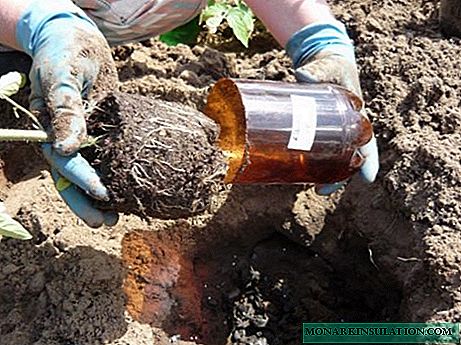
When extracting seedlings, it is important not to disturb the root system
- Water the bushes with a temperature of 25-30 aboutC and mulch the soil slightly with humus or peat.

When watering the planted seedlings, it is advisable not to wet the leaves
It is advisable immediately after planting, until the bushes have grown strongly, to drive strong stakes or build a common trellis for tying. Tie bushes will be required soon, as soon as they resume their growth in a new place.
Bushes care in the greenhouse
Absolutely all operations during the cultivation of Verliok tomato are well known to gardeners: this is watering, loosening the soil, weeding from weeds, as well as several top dressings, the obligatory and timely formation of a bush, its binding to strong stakes or trellises. They try to water the tomatoes in the evening, waiting for the water to have time to warm itself in containers in the sun. Tomatoes should not be given excess water, but it is also impossible to allow the soil to dry out explicitly. In greenhouses, too high relative humidity is very dangerous, therefore, especially when forced to make a large amount of water, one should not neglect the ventilation of the greenhouse. In general, for a day the greenhouse should be left open, except in cases of obvious cooling.
Tomatoes especially need water during flowering and fruit loading, and then, as they mature, water less often and less.
Until the bushes grow, after irrigation it is necessary to loosen the soil, while fighting weeds. Tomatoes are fed necessarily: this must be done regardless of how well the bed was prepared in the fall. The first feeding is carried out 12-15 days after planting tomato seedlings, and then it is carried out several more times during the season. Any composition can be used for feeding, but with the beginning of the redness of the fruit, nitrogen should not be added: they are limited to superphosphate and wood ash.
They form Verlioki bushes in one or (more often) two stems. The second stem is a strong stepson, chosen at a convenient height. The remaining stepchildren are subject to unconditional breaking out when they grow to a size of several centimeters. A feature of the agricultural technology of this hybrid is that the central stem is pinched after the formation of the fourth (and sometimes third) fruit brush. In this case, the severity of the crop will be optimally distributed between the main stem and the stepson left.

Breaking down stepsons, you need to leave small hemp so that they do not grow again
This tomato is tied several times during the summer: first we are talking about tying stems, and then brushes with fruits. This should be done carefully using any soft twine or knits cut from old sheets. Over time, it will be clear which leaves interfere with fruit ripening: they are removed. As the bushes grow, all lower leaves are removed, right up to the first fruit brush.
If the greenhouse is aired in time, the incidence of Verlioki is practically excluded. At least most gardeners do not even carry out any preventative spraying. But if suddenly some pests climbed into the greenhouse, we should rather use folk remedies: infusions of garlic, onion husks, wood ash, etc. This will allow us not to bring the matter to use chemical insecticides.
Video: Verlioc tomato in the greenhouse
Reviews
There are 2 Verlioki. Just Verlioka and Verlioka + (improved form) - someone likes the old one better, someone basically doesn’t care. It seemed to me that the new rubberized, or something. More close to market tomatoes. In agricultural technology, everything is as always. We feed, we catch ... she is very responsive to care.
Nyusha
//www.forumhouse.ru/threads/175183/page-87
I was disappointed with the improved Verlioca tomato - a completely bulletproof skin. She does not cut, does not bite, does not chew ...
Sveta
//www.e1.ru/talk/forum/read.php?f=122&i=109659&t=109659&
Last year, Verlioka + was my leader in productivity (10-liter bucket from the bush) and taste.
"Kitty"
//www.e1.ru/talk/forum/read.php?f=122&i=109659&t=109659&
I liked the variety very much. In 2017, they were grown in a greenhouse, since the summer was rainy. The crop was excellent. In 2018, I bought it again.
Marianne
//otzovik.com/review_6047692.html
Tomato Verlioca is a vivid representative of early ripe hybrids of universal use. It is grown in greenhouses, where it gives very high yields of aligned small-sized fruits, which are distinguished by good taste and the possibility of use in any form. The agricultural technology of the hybrid is uncomplicated, therefore, for almost three decades, it has been popularly deserved.




